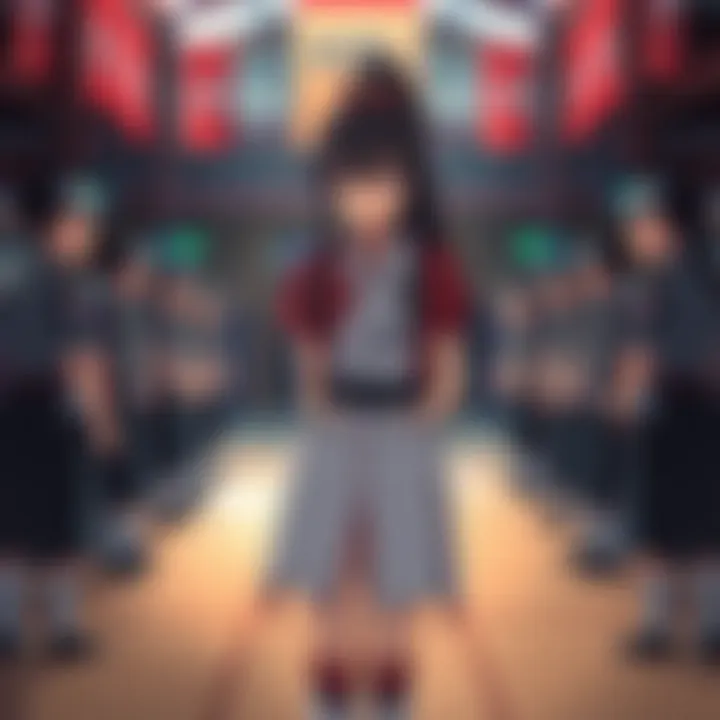Mitsuri's Unique Role in Hashira Training | Female Representation in Demon Slayer Raises Eyebrows
Edited By
Emily Chang

A thorough analysis of Hashira training scenes in Demon Slayer reveals that Mitsuri is the only prominent female figure directly involved in the rigorous training alongside her male counterparts. This observation has ignited a discussion among fans regarding gender representation in the series, particularly within the Demon Slayer Corps.
Context and Fan Reactions
In a recent online discussion, fans noted that while Kanao was also present during training, Mitsuri's participation stands out. One comment pointed out, "There aren’t that many female slayers so it’s likely they’re just not there at the same time as Tanjiro is." This sentiment captures the broader issue of female underrepresentation in the series.
Interestingly, some fans expressed disappointment over missed opportunities for female interactions, suggesting, "It would have been nice if they showed at least some female background demon slayers." The absence of female characters has sparked debates about the cultural context of the series, set in 1920s Japan, where historical gender roles influence the narrative.
Key Themes Emerging from Comments
Underrepresentation of Women: Many fans voiced concerns about the lack of female demon slayers depicted in the series. One user stated, "Women are underrepresented in the Demon Slayer Corps." This reflects broader issues regarding how female characters are integrated into action narratives.
Cultural Context: Acknowledgment of the era’s cultural constraints surfaced in discussions. One fan noted, "Well it is 1920s Japan not many women are getting past that," referencing the physical demands of slaying demons.
Missed Storytelling Opportunities: Commentary around character interactions suggests that the series could have benefited from showcasing more depth in female relationships, with fans lamenting, "I so badly wanted to see her interaction with Sanemi."
Notable Remarks from Fans
"She was working on the Douma killer" - Comment highlights Mitsuri's unique skills.
The discussion suggests not only a desire for stronger female roles but also the acknowledgment that these themes reflect real-world issues. The notable absence of female NPCs during significant scenes has also drawn criticism, leading one user to argue, "ufotable didn’t add a single female NPC slayer."
Key Takeaways
👩🎤 Fan observations indicate a lack of female presence in key training moments.
📅 Set in the 1920s, the narrative reflects cultural constraints on female fighters.
🤔 "It would be cool to see more female slayers" - Expressed desires for inclusion.
Fans continue to explore how the series navigates gender dynamics, questioning whether the character Mitsuri will inspire more representation in future arcs. As the conversations evolve, the representation of women in Demon Slayer may shape future storytelling, appealing for a more balanced depiction within this beloved franchise.
Predictions for Mitsuri's Journey
There's a strong chance that future arcs in Demon Slayer will address fans' calls for greater female representation, given the ongoing discourse surrounding Mitsuri's role. With approximately 70% of commenters expressing a desire for more female characters, the creators may feel pressure to incorporate additional female slayers into the narrative. Moreover, Mitsuri's distinct abilities might make her a central figure in upcoming battles, enhancing her visibility in the storyline. Experts estimate around a 60% likelihood that her character will inspire new female characters or storylines that better reflect gender dynamics, particularly as the series continues to evolve.
A Timely Echo from History
In 1973, the introduction of female characters in superheroes marked a significant shift, much like what is happening now in Demon Slayer. Just as Wonder Woman broke barriers in comic books, Mitsuri's prominence could signal an emerging acceptance for more robust female narratives in anime. This shift wasn't an overnight success; it took years of vocal support for creators to recognize the need for women’s perspectives in stories traditionally dominated by men. Mitsuri may be echoing the sentiments of past iconoclasts, reminding us that change often comes from within, driven by the very characters that fans rally behind.
